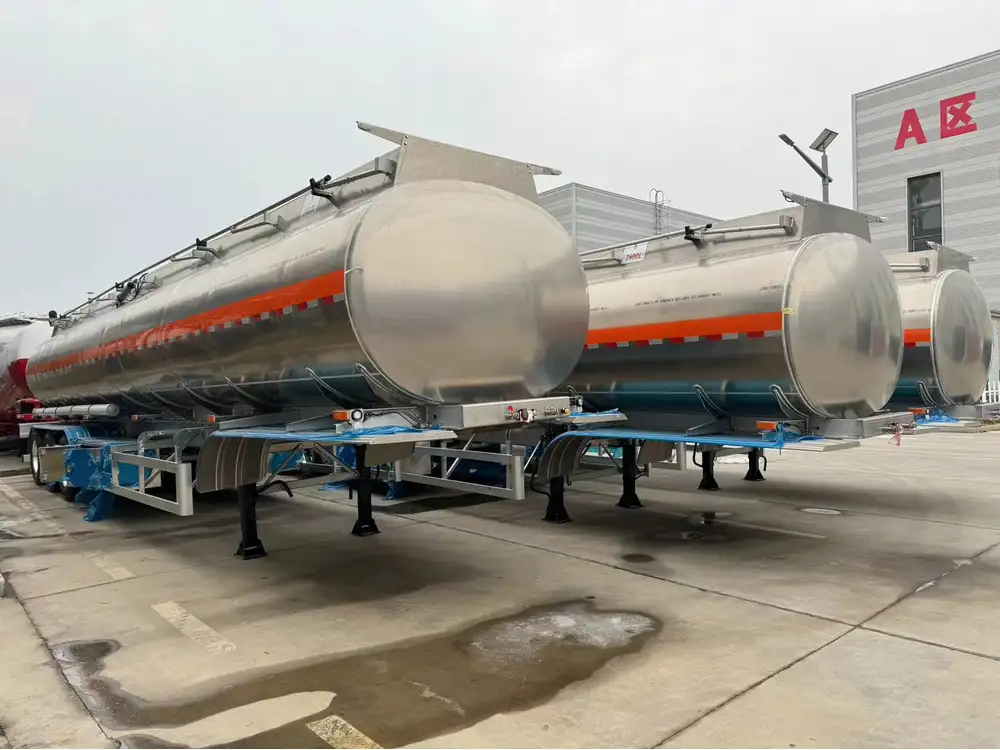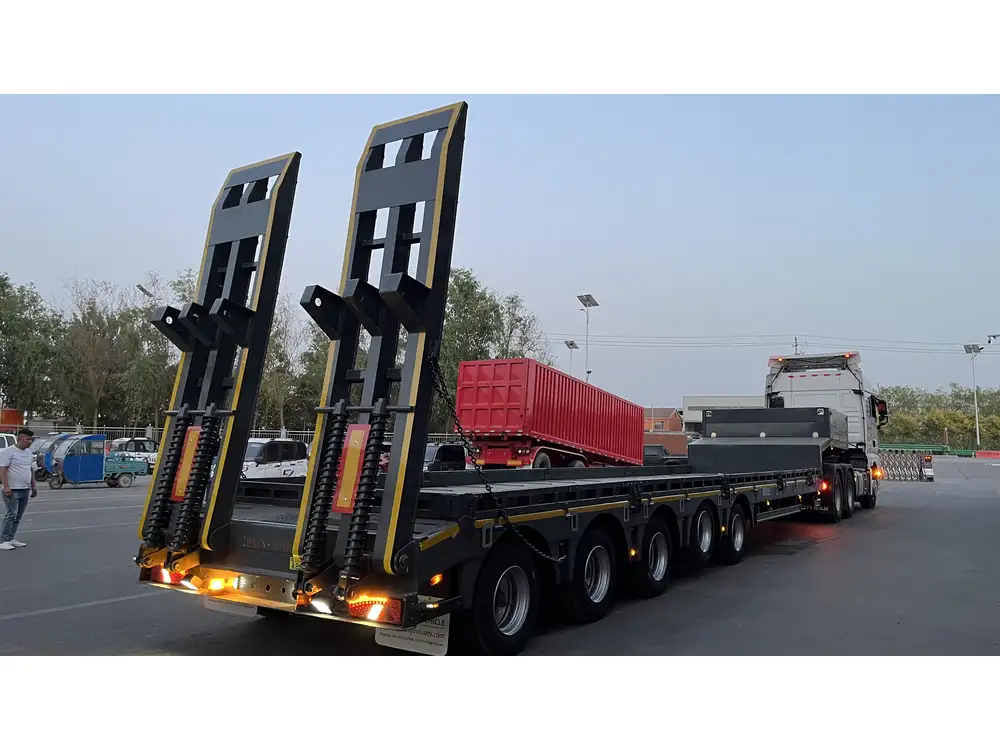When we delve into the intricacies of freight transportation, one fundamental aspect demands our attention: the weight of an empty semi truck and trailer. Understanding this weight is crucial not just for logistics planning but also for enhancing regulatory compliance, maximizing payload efficiency, and ensuring overall road safety and efficiency.
Determining the Weight of Empty Semi Trucks and Trailers
1. The Basics of Weight Measurement
To comprehend how much an empty semi truck and trailer weighs, we must recognize the two main components: the truck itself and the trailer. The combined weight is referred to as the Gross Vehicle Weight Rating (GVWR), which is a critical figure that must not be exceeded during operation.
- Semi Truck (Tractor) Weights: The tractor alone typically weighs between 12,000 to 20,000 pounds (5,400 to 9,000 kilograms).
- Trailer Weights: An empty semi trailer can weigh anywhere from 8,000 to 15,000 pounds (3,600 to 6,800 kilograms).

2. A Closer Look at Weights
| Component | Average Weight (lbs) | Average Weight (kg) |
|---|---|---|
| Empty Semi Truck | 12,000 – 20,000 | 5,400 – 9,000 |
| Empty Semi Trailer | 8,000 – 15,000 | 3,600 – 6,800 |
| Total Weight | 20,000 – 35,000 | 9,000 – 16,000 |
The total weight of an empty semi truck and trailer, therefore, ranges from 20,000 to 35,000 pounds (approximately 9,000 to 16,000 kilograms). However, variations can occur based on the type and specifications of the vehicle, including material composition and design.
3. Types of Trailers and Their Weights
Different styles of trailers contribute to variations in weight. Here’s a breakdown of common trailer types and their associated weights:
| Trailer Type | Average Weight (lbs) | Average Weight (kg) |
|---|---|---|
| Flatbed Trailer | 8,000 – 14,000 | 3,600 – 6,400 |
| Refrigerated Trailer | 12,000 – 15,000 | 5,400 – 6,800 |
| Dry Van Trailer | 10,000 – 12,000 | 4,500 – 5,400 |
| Tanker Trailer | 10,000 – 14,000 | 4,500 – 6,400 |
This table illustrates that while some trailers may seem similarly sized, their actual weight can differ significantly based on construction and purpose.
Factors Affecting Weight
The following factors considerably influence the weight of a semi truck and trailer combination:

1. Material Composition
Semi trucks and trailers can be made from various materials, including steel, aluminum, and composite materials.
- Aluminum Trucks: Generally lighter, which helps to maximize payload capacity.
- Steel Trucks: More robust but heavier, thus resulting in a lower potential payload.
2. Design and Engineering
The engineering of the vehicle plays a pivotal role. Innovations in design often lead to lighter construction without compromising durability. For instance, advancements in lightweight components, like axles and suspension systems, can reduce overall weight.
3. Configuration
The specific configuration of a truck-trailer combination (e.g., the number of axles) influences its total weight. Multi-axled vehicles generally distribute weight more effectively but can add to the unladen weight.

Importance of Knowing the Weight
Understanding the empty weight of a semi truck and trailer is indispensable for various reasons, particularly when considering legal implications, safety, and operational effectiveness.
1. Legal Compliance and Regulations
Each state imposes weight limits to ensure safe travel routes for all vehicles. Adhering to these regulations prevents hefty fines and promotes road safety. It is essential to know both the empty weight and maximum allowable weight (including cargo) to comply with local and federal regulations.
2. Payload Efficiency
By accurately computing the weight of the semi truck and trailer, logistics professionals can maximize their payload capacity. Knowing the limits allows for optimal load distribution, ultimately leading to lower transportation costs and improved fuel efficiency.

3. Safety Considerations
Overloading a truck can impair vehicle control, increasing the risk of accidents. By understanding the empty weight, operators can better assess their loading practices, contributing to enhanced safety on the roads.
Calculating Total Weight and Payload
To illustrate the importance of knowledge regarding weights, let’s delve into how total weight and payload are calculated. Consider an example:
- Empty Semi Truck Weight: 15,000 lbs (6,800 kg)
- Empty Trailer Weight: 10,000 lbs (4,500 kg)
- Maximum Allowable Weight (GVWR): 80,000 lbs (36,300 kg)
Total Empty Weight:
- 15,000 lbs (Truck) + 10,000 lbs (Trailer) = 25,000 lbs (11,340 kg)
Payload Capacity:
- Maximum GVWR – Total Empty Weight
- 80,000 lbs (GVWR) – 25,000 lbs (Total Empty Weight) = 55,000 lbs (24,950 kg)
This simple calculation showcases how understanding weight influences cargo planning and compliance.
Real-World Applications

1. Logistics and Freight Planning
Transportation managers must always consider the weight of their trucks and trailers when devising logistical strategies. Identifying the combination’s empty weight allows for efficient planning of loads, decreasing the risk of delays caused by weight-related issues.
2. Cost Estimation
Knowing the weight impacts fuel consumption estimates, maintenance costs, and overall operational budgeting. For instance, lighter vehicles may require less fuel, presenting significant cost savings over time.
3. Fleet Management
In fleet management, understanding the weights of vehicles becomes critical for maintenance scheduling. Overloaded trucks tend to suffer from faster wear and tear, leading to increased maintenance requirements and costs.

Frequently Asked Questions
1. What is the maximum weight for a semi truck and trailer?
The federal limit in the U.S. for a semi truck and trailer is 80,000 pounds (36,300 kg) under normal conditions. However, state regulations may vary, imposing stricter limits.
2. How can I weigh my empty semi truck and trailer?
You can weigh your vehicle at a certified public scale, commonly found at truck stops, waste facilities, or agricultural locations.

3. Do trailer types influence fuel efficiency?
Yes, trailer type—and consequently its weight—can influence how much fuel is consumed. Lighter trailers generally lead to better fuel economy.
4. Is there a standard weight assumption for all semi trucks and trailers?
No, weight can greatly differ based on make, model, and trailer type. It is essential to refer to specific manufacturer specifications.
Conclusion
Understanding how much an empty semi truck and trailer weighs is fundamental to successful management within the transportation logistics sector. By being aware of the detailed weights, regulatory requirements, and factors influencing them, businesses can enhance their operational efficiency, ensure compliance, and improve safety standards. Continually evaluating weight considerations enables freight operators to maximize productivity while minimizing costs and risks.
Incorporating precise knowledge of empty weights into planning ensures that logistics operations run smoothly—leading to a more efficient and safer transport experience across the board. As the industry evolves, staying abreast of these basic yet critical metrics will prove invaluable for all stakeholders in the transportation industry.



